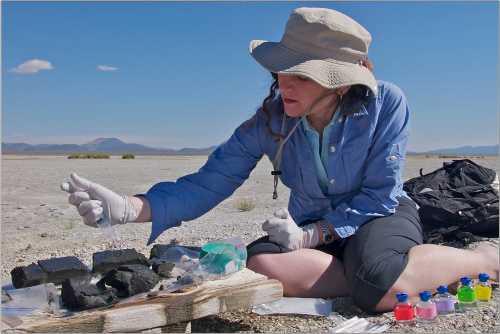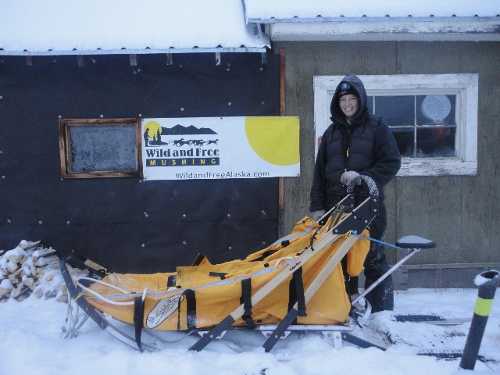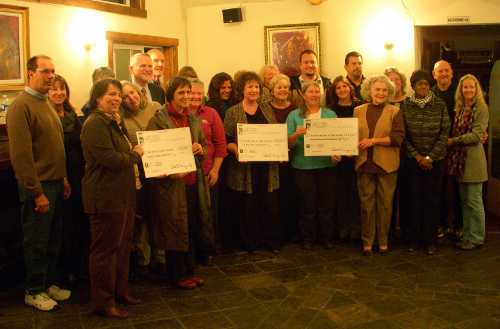LAKEPORT, Calif. – At its upcoming meeting the Lakeport Planning Commission is set to take up a request from the Lakeport Police Department to revoke a local bar's permit for live entertainment.
The commission meeting will begin at 6 p.m. Wednesday, Dec. 8, in the council chambers at Lakeport City Hall, 225 Park St.
At the meeting commissioners will host a public hearing on the request to revoke Full Throttle Tavern's zoning permit, which allows the establishment to offer live entertainment.
Sean Lyon, one of the bar's owners and its manager, said he was “dumbfounded” when he received a letter from the city in the middle of last month, announcing the revocation request from the police.
He called dealing with the city a “frustrating process.”
“We bent over backwards trying to accommodate the neighbors, the police department,” he said.
City Planning Services Manager Andrew Britton said the revocation discussion is based on the complaints regarding the venue.
“A lot of the complaints our police department has been dealing with, and they formally brought it to our attention and requested our department take action, and that means taking it before the planning commission for potential revocation,” said Britton.
Interim Police Chief Brad Rasmussen told Lake County News that he and police department staff have met with Lyon several times since the summer, when the agency started offering suggestions on how to address the complaint issues.
Rasmussen said the bar's owners appear to be trying to make efforts to resolve the issues, “but we continue to get the complaints.”
He and Sgt. Kevin Odom will attend the Dec. 8 planning commission meeting, where he said they will present their case about revoking the zoning permit.
The tavern, located at 650 S. Main St., was formerly known as The Fireside Lounge, an establishment open for more than 30 years. Lyon and his partners purchased the business from Vivian Kroppmann and reopened it as the Full Throttle Tavern in April.
Lyon, who has worked in other areas of business, said he was intrigued by the idea of owning a bar, since such businesses seem to survive all financial climates.
He said he wanted to take a unique approach to the business, and has hosted theme parties, as well as live music, which is a big draw since the bar has what he said is the city's largest dance floor.
The business also has conducted fundraisers for people in need, and tries to be a contributing member of the business community, he said.
Lyon said he's received overwhelmingly positive feedback from customers.
But the same hasn't been true of city officials, which have found numerous issues with the establishment.
Because of the bar's close proximity to a residential area, when Full Throttle was getting set to open, Britton said, “We were concerned about the proposal initially and there were conditions of approval that were tied to the zoning permit.”
The permit conditions include live entertainment not being audible beyond the premises, limiting use of the rear smoking deck/patio to 10 a.m. to 10 p.m. when there is live entertainment and prominently displaying a sign for maximum occupancy of 49 people.
Even with the conditions, “We're still seeing the problems,” said Britton.
Odom said in a report to the commission report that it's the police department's opinion that there are two primary causes for the noise complaints: the building's age and the fact that it wasn't built to accommodate amplified sound, which creates an issue for the nearby residential area; and the bar management's alleged failure to resolve the insulation issue or to police the exterior of the building where people gather.
He said bar patrons loitering outside has led to littering, wandering in and out of traffic and physical confrontations.
Lyon said he has tried to address the city's concerns, meeting with Lakeport Police and implementing suggestions such as outside lighting and soundproofing – both the walls and a recent soundproof floor installation – and shutting off a back smoking area.
He said he plans to install new windows and a new door, and wants to enclose the back smoking deck in order to provide smokers a place that won't disturb the neighbors. However, he said he had waited for some time for a city planning official to tell him what was needed to complete that project.
Lyon said he has walked the nearby neighborhood and found no serious complaints. However, over the summer one neighbor from across the street began to raise issues, making numerous police reports and calling the bar every 15 minutes on some busy nights.
Lakeport Police logs showed a Nov. 6 report from a bartender who said she received a threatening call from a subject calling her names and telling them to turn down the music. Lyon said it was the same neighbor lodging most of the complaints.
Police issue complaint concerns in report
Since Full Throttle opened, Lakeport Police has had dozens of calls to the business, with reports of everything from late night noise levels to fights, sex in public and an employee being intentionally run over with a vehicle, according to Odom's report.
The situation involving Lyon's bartender occurred late in October, Lyon said. The Upper Lake man alleged to have hit the bartender with his car was arrested for assault with a deadly weapon.
The bar has had a few fight incidents, with only one occurring inside, Lyon said. The patrons responsible were told not to come back.
Odom's report, dated Nov. 16, stated that since the bar reopened earlier this year, the police department has received no fewer than 34 noise complaints between the hours of 11 p.m. and 3 a.m. The city also has been contacted by about five residents over the ongoing issues.
In addition, Odom said there have been more than a dozen alcohol-related arrests associated with the location.
During that time, Lakeport Police has generated at least 60 incidents at the bar, compared to 35 at TJ's Bar and Grill, 29 at the Clearlake Club, 12 at the Buckhorn Club and five at Molly Brennans for the same period.
Lyon, however, counters that unfounded complaints and incidents haven't been separated out from those statistics, and he believes other local bars have more serious issues with fights than his.
Odom reported that in an incident late in the evening on Tuesday, Nov. 9, officers were dispatched to a noise complaint and discovered a DJ was at the venue. Odom said the zoning permit only allows for live entertainment Thursday through Sunday.
“It is evident that the Full Throttle Tavern management is not abiding by their zoning/entertainment permit,” Odom stated.
Lyon acknowledged that his bartender allowed the DJ on a night when it wasn't supposed to be allowed. However, he added, “I feel that I run a very responsible bar,” where patrons aren't overserved and they attempt to create a fun, safe environment.
All bars have issues, he said. “This is totally unjustified,” adding, “There's a lot more attention than there should be put on my establishment.”
Rasmussen said the goal is to assist the business at being successful. “At the same time, our primary responsibility is toward public safety,” Rasmussen added.
If Full Throttle can't come into compliance with the city's rules, Rasmussen said the police department will have no choice but to take further action. “That's kind of where we're coming from.”
The last time Lakeport Police had to take administrative action against a local business was about two years ago, when they took action regarding Lakeside Lanes' liquor license, Rasmussen said.
Lyon said live music is an important part of his business, and losing the permit would be a serious issue.
“It's going to impact my business severely,” and could force him to lay off one of his four employees, he said.
He asked that community members who support his business show up to the commission's Dec. 8 meeting.
E-mail Elizabeth Larson at This email address is being protected from spambots. You need JavaScript enabled to view it. . Follow Lake County News on Twitter at http://twitter.com/LakeCoNews , on Facebook at http://www.facebook.com/pages/Lake-County-News/143156775604?ref=mf and on YouTube at http://www.youtube.com/user/LakeCoNews .

 How to resolve AdBlock issue?
How to resolve AdBlock issue? 









